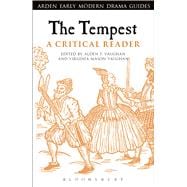The Tempest, the last play Shakespeare wrote without a collaborator, has become a key text in school and university curricula, not simply in early modern literature courses but in postcolonial and history programs as well. One of Shakespeare's most frequently performed plays, The Tempest is also of great interest to a general audience. This volume will outline the play's most important critical issues and suggest new avenues of research in a format accessible to students, teachers, and the general reader.








